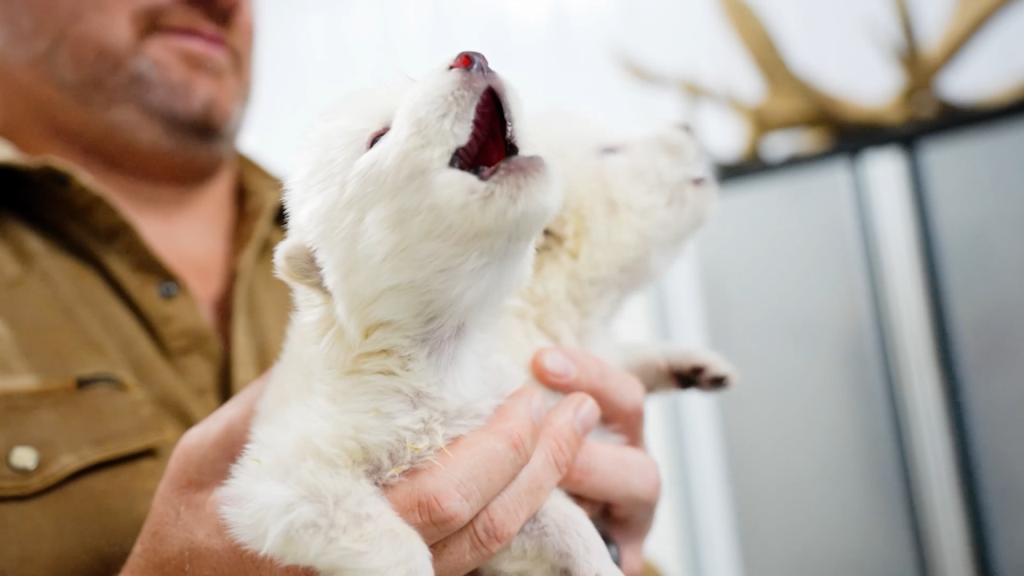
Return of the Dire Wolf

Controversy overtook the world of science this week when biotechnology company Colossal Biosciences claimed to have successfully “de-extincted” the dire wolf, a prehistoric species of canine that has been extinct for over 10,000 years. While the company did in fact produce two wolves with many features similar to the ancient animal, scientists outside the company have argued that they did not, in fact, “de-extinct” the ancient species.
Colossal announced their achievement just this week, accompanying their statement with pictures and videos of the three wolves. Two of the wolves, Romulus and Remus, are 6 months old, and the third, Khaleesi, is 3 months old. The animals do look very similar to the popular conception of a dire wolf’s appearance, a feat which was accomplished by editing their genes with CRISPR technology.
Colossal had to use CRISPR, instead of cloning the animals, because of poor state of our samples of dire wolf DNA. While bones from dire wolves have been preserved in the La Brea tar pits, the DNA contained within them is severely damaged. To overcome this difficulty, Colossal extracted what they could from the bones, then used that make a theoretical reconstruction of the whole.
Next, Colossal needed to create a living animal with DNA similar to their reconstruction. To do this they took a single cell and removed its nucleus. They then edited that nucleus, changing 14 of its genes, which would result in 20 physiological changes in the animal. Finally, the edited nucleus was insert into a denucleated ova of from a regular gray wolf, and that was placed into the wolf who would become the new animal’s mother. Of the numerous ova this procedure was performed on, two successfully implanted, Romulus and Remus. A second batch was later created, and one of those, Khaleesi, also implanted.

The three new wolves are beautiful animals, with stark white fur, large frames, and broad skulls. They’re beautiful animals, and in many ways they are similar to our reconstructions of ancient dire wolves. But the may not truly be dire wolves.
Soon after Colossal announced their breakthrough, scientists began to question their claims. The publicity from their claimed “de-extinction” could be an ulterior motive for their claims, and the animal they produced is by no means identical to the original dire wolf. This is because Colossal’s recreation is based not on an exact match of DNA, but on the editing of a few genes which produce what the company thinks are the most important physiological traits of the ancient dire wolf. Not all scientists agree that this is enough to recreate the ancient species, although there is some ambiguity on what exactly does constitute a species.
While the debate on whether Colossal has resurrected the dire wolf continues, there’s another discussion which the media has touched on only briefly. What, we must ask, are the ethical implications of this use of technology? Last week we examined a clearly beneficial use of gene editing, but this week we’re looking at one that’s less clear-cut.
There are two parts to this kind of question: Whether the action in question is wrong in itself, and whether it’s imprudent. Both are important, and so both deserve at least a cursory examination here.
The former question seems clear: to use an animal or to modify creation are not intrinsically evil. We domesticate animals for use all the time, and our very survival sometimes requires killing animals. So it doesn’t seem that genetically modifying animals is intrinsically wrong. Further, the Church has sanctioned some modification of humans, as we discussed previously. That’s a second proof that what’s being done here is not an intrinsic evil.
The latter question can be answered by looking to our stewardship of nature. God set man into the garden of Eden to “cultivate and care for it,” and that goal remains as true today as it was on our first day of existence. Thus, if the genetic modification of animals helps maintain the integrity of the natural world (as it might when preserving species from destruction by human-caused issues like habitat loss) then it is probably moral.
Remeber, though, that such technologies must be ordered to the the preservation of our world’s integrity. If the goal is some sort of futurist, humanist “improvement” on the natural world, it’s likely that what’s being done is far from beneficial, and just as far from right. Our vocation is to steward this world, not create a brave new world.
Overall, this piece of news only highlights the need for leaders in scientific ethics to step forward and focus their efforts. The numerous difficult questions raised by this achievement and its surrounding publicity make it clear that science needs ethical leadership now more than ever, and the vagueries surrounding the company’s claims of de-extinction show that science has in no way transcended the need for good philosophy.





